Poetry Unit Begins with a ‘Listening’ Field Trip
A MiddleWeb Blog
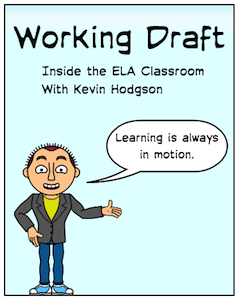
Subtitled “A Poetry Atlas of the United States,” this collection of poems curated by editor Lee Bennett Hopkins is designed to capture the essence and character of the United States through place-based poetry.
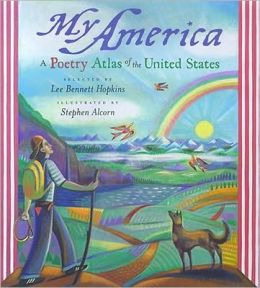
Poem after poem is an excursion forward into the character of the country, without ever leaving our classroom, and as such, My America is a prime example of a mentor text.
A Metaphorical Mystery Tour
In my sixth grade class space, I make the understanding of the poems a game of sorts. A mystery game. We begin with a map of the United States, where I have highlighted various regions of our country. The Northeast. The Southwest. The Mountain States. And so on.
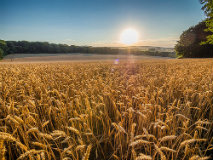
The land, slowly rising towards a distant glory,
Is devoid of ornaments or sudden splendor.
It is a land no tourist travels far to see …
— from “Nebraska” by Jon Swan
We then discuss what we know about these parts of our country, relying on some students’ own experiences with travel or, if we are lucky, someone who has lived there before moving to Western Massachusetts. I am careful to give purposeful hints about the characteristics of the regions in our discussions, dropping in a reference to lighthouses in New England, the windy streets of Chicago, the flatness of the prairies, the hidden worlds of the Arizona deserts, or the dormant volcanoes of Hawaii.
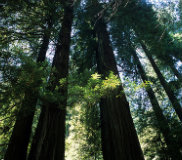
Fingering the clouds in search of moisture
Pulling down the fog and passing it
From limb to limb …
–from “Behind the Redwood Curtain” by Natasha Wing
Listening for Location
Students make a chart to track their listening, with a column for what region they think a poem represents, the evidence from the poem that they heard to support that assumption, and any figurative language/literary devices they recognized in the verses. With that chart set, they listen as I read aloud my own selection of poems and then make their guesses of the region represented by the poem in writing, supported by evidence.
I read each poem at least twice, slowly and with emphasis. They do not have the poem in front of them, so they have to be careful listeners for this activity. They must attend to my voice, and I play it up with the best poetry performance voice I can muster.
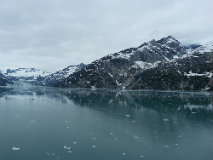
Such cold seas of silence! such room!
Such snow-light, such sea-light, confounded
With thunders that smite like a doom!
— from “Alaska” by Joaquin Miller
After reading 10 poems, we go back, and I re-read each poem one more time. Students then make their guesses as to the region being represented by the poems, and support their guess with evidence. It is at this time that I finally give them titles (which I earlier withheld). Surprisingly, the reveal of titles often is a very exciting element, and I have frequently given them an opportunity to suggest their own titles when we hear the poems the first time around.
Original Place-based Poems
Of course, the lesson is not over. Now that they have listened to the poems of our country, it is time to write their own place-based poems. We continue the game element. Their task is to use imagery to capture the essence of a place they know and love (a vacation spot, or a neighborhood hideout, etc.) but not name the place. The next day, volunteers share their poems and we all try to guess the location.
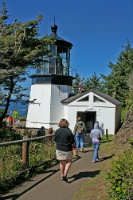
of stone,
a refuge of white
with a code
all of its own,
flashing constant
and bright …
— from “New England Lighthouse” by Rebecca Kai Dotlich
There are many things I love about this lesson. The poetry, of course, is fantastic. The discussions of our country, and the features that make up the richly varied regions, always spark interesting observations. And then turning the tables by asking them to compose poetry of their own … that’s the icing on the cake.
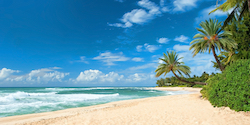
White surf gleams
Rolling seas
Shifting dreams …
— from “Mauna Loa” by Tom Robert Shields
































April is National Poetry Month (of course) and the Poetry Foundation (Children) has more resources: https://www.facebook.com/poetryfoundationchildren
Kevin, great idea well done. Congratulations to you and your lucky students.
Thank you. I hope a poem brings joy to you this month (and maybe, you write your own, too)
Kevin
Great ideas here. Thanks for sharing!
Love the listening field trip. Poetry delights our ears. I’m getting a sense of recurring inward and outward movement. Hope to try it out, too.